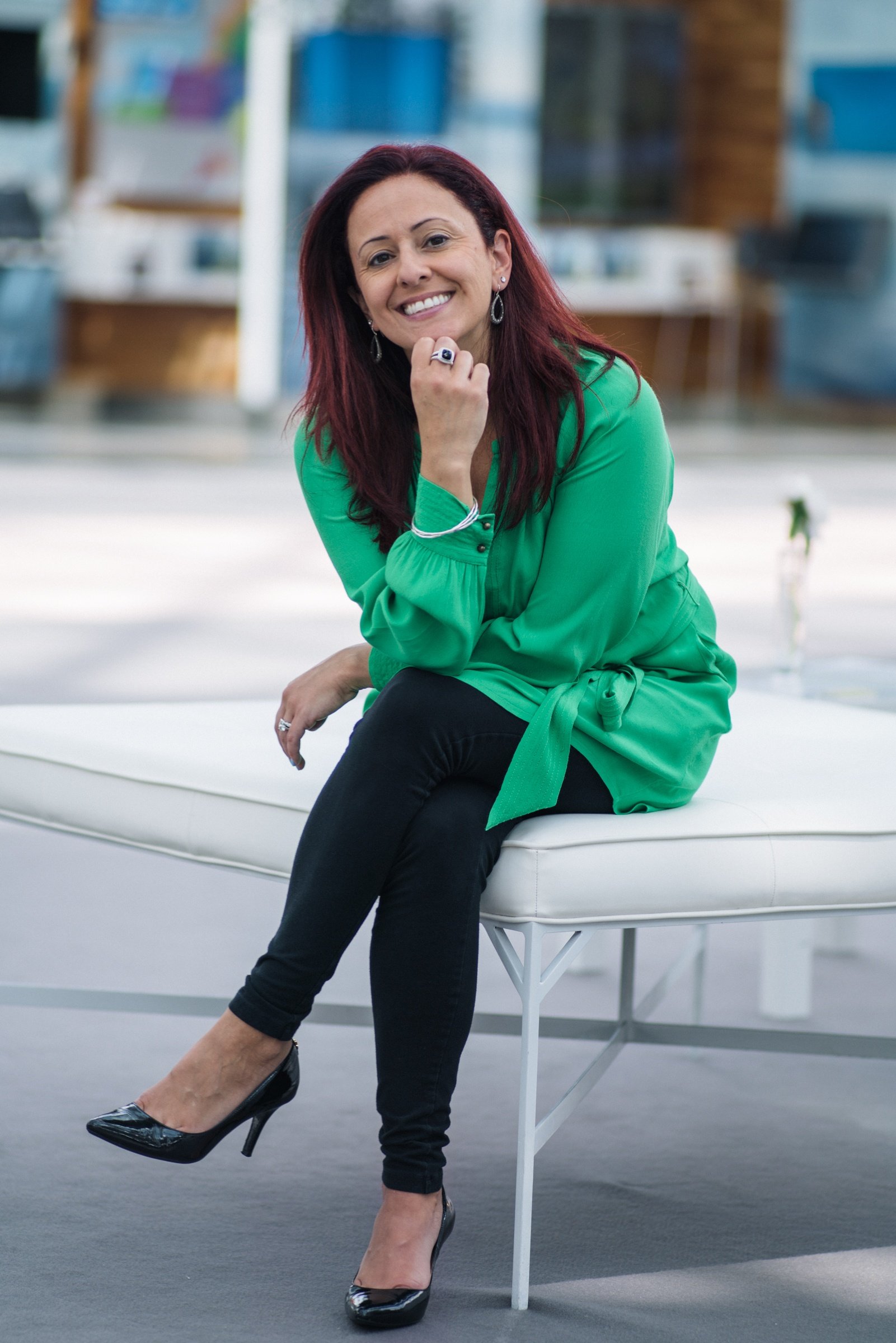UPDATE JANUARY 2018: We reconnected with Dan Guilbeault of DC at the end of 2017 to see how their 2017 Volunteer Ambassador cohort and how the program was evolving. Read the update from Dan.
This article first appeared on Triple Pundit.
We’re in the thick of Earth Month, a time when many local communities plan big community sustainability events to tap into a heightened (and sometimes fleeting) desire to “go green.” The warmer weather also kicks off a season of community events — from 5K runs and neighborhood association block parties to ethnic festivals and farmers markets — that stretches through the fall (when, advanced planners might note, Energy Action Month can be a good hook).
The local governments I’ve worked with over the years often struggle with the following:
- How can limited staff hit all these events, especially when the majority of these events fall outside the standard Monday-Friday, 9-5 work week?
- For those events you can cover, what’s the best way to really engage the folks there?
- And how do you become part of the everyday conversations that your community members have?
One place to look is Washington, D.C. — the local government part, not the federal.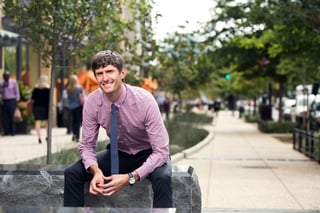
I recently spoke with Dan Guilbeault, chief of the sustainability and equity branchof Washington, D.C.’s Department of Energy and Environment, about the District’s innovative and effective Sustainable D.C. Ambassadors volunteer program.
Take a listen to our SAS Talk with Kim podcast of that discussion, as Guilbeault dives into the nuts and bolts of the program, now in its fifth year.
Building a foundation for engagement
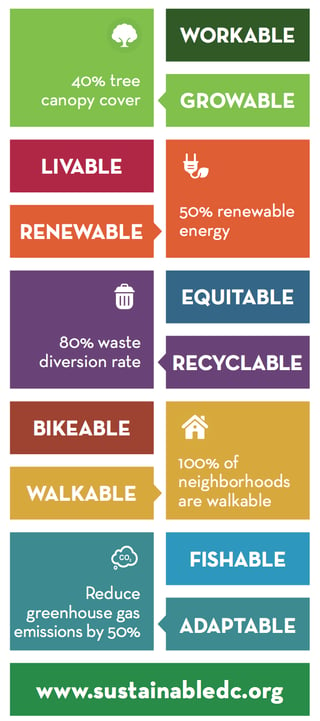
The District has a pretty robust catalog of sustainability initiatives from its Sustainable D.C. Plan that it wants to spread the word about — from a bike share program to solar energy to getting healthy food in schools. And it’s a progressive city with support from elected leaders, local government staff (Guilbeault estimates that due to the District government’s unique function as city, county, and state government, between 60 and 80 people working in D.C. government touch sustainability either directly or indirectly) and residents.
Even in such fertile ground, D.C. knew better than to take a “build it and they will come” approach. So during the development of the Sustainable D.C. plan from 2011 to 2014, Guilbeault said community participation was a “foundational element.” More than 700 people were involved during the plan’s creation, with volunteers meeting every other week to draft a vision and recommendations. It was a dedicated group, but the participants didn’t necessarily reflect the city’s diversity in terms of age, race, income or ward (D.C .has eight wards, with which many residents strongly associate). Nor could the District count on that level of engagement during the implementation phase.
One way that the District has tried to crack the community engagement nut was to create a group of credible, natural advocates with the Sustainable D.C. Ambassadors program. At its core, the program admits what we all know: it’s better to have residents talking with other residents about our sustainability work than to have government workers talking at them.
So what have been some of the keys for the District? I’ve summarized the top takeaways from my conversation with Dan Guilbeault:
Make it empowering
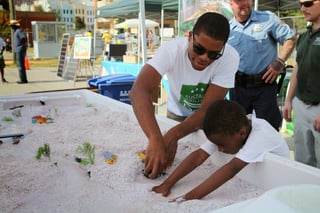 Guilbeault was very clear that the District was “not looking to create disciples.” These are not paid District employees, and they are not given specific scripts. Guilbeault’s team trains them with basic knowledge about sustainability options so they feel empowered to answer questions, communicate why this matters to the community and point people in the right direction.
Guilbeault was very clear that the District was “not looking to create disciples.” These are not paid District employees, and they are not given specific scripts. Guilbeault’s team trains them with basic knowledge about sustainability options so they feel empowered to answer questions, communicate why this matters to the community and point people in the right direction.
This ranges from working a table at a community event to talking with friends and family in more run-of-the-mill conversations. These ambassadors — even once they completed the program — take what they’ve learned into their personal and work lives. They can answer a neighbor’s question about energy efficiency, or post a response on a neighborhood listserv about recycling or offer advice on how to make their workplace greener.
There is also an application process, and the District has to turn people away each year. (Guilbeault says they usually get around 80 applicants and select a cohort of about 40 to 50. They count on about 30 of those being the most active, and about seven to 10 carry over to the next year with the opportunity to become mentors to the newbies.) That means those who were chosen know they are part of a select group, which in turns helps them keep their commitment.
Make it easy
What is that commitment? The quickest way to lose volunteer steam is to make it burdensome, but you also need people to feel invested. Any behavioral scientist will tell you that having someone make a specific pledge or commitment boosts the chance of action.
Ambassadors commit to attending one community event a month (typically a two- to three-hour shift), helping the District’s goal of Ambassadors participating in at least one event every weekend. (This recruitment flyer gives you some of the program basics and value propositions.)
It’s hard to pull that off on the backs of District staff alone, especially when you might have competing events that request your presence. The idea is to take make it easy for the volunteers to just show up at events and be on autopilot. District staff deal with the logistics of scheduling and stocking up on materials, etc, so that the Ambassador’s time and energy can be focused on the task at hand: talking to the community.
Guilbeault is quick to note that making it easy on the volunteers can be a “heavy lift” for staff, so give careful consideration to your staff time and resources before charging forward with a similar approach. As the program has evolved, the District has responded to feedback to make the application and training process less burdensome and more accessible.
Make it representative
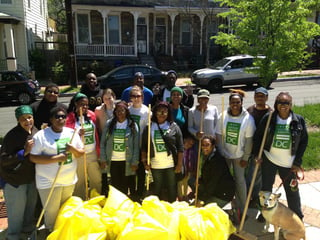 It’s a work in progress, but true to the “equity” part of his department’s mission Guilbeault talks about their efforts from the very beginning to go beyond the usual suspects.
It’s a work in progress, but true to the “equity” part of his department’s mission Guilbeault talks about their efforts from the very beginning to go beyond the usual suspects.
The pilot year intentionally included at least several ambassadors from each of the District’s nine wards. But they know that to get a diverse pool of candidates, it’s critical to build partnerships with a broad range of organizations that can act as trusted voices to the community.
Hearing about a volunteer opportunity from an organization a resident knows and trusts can be far more appealing than receiving the same opportunity from government.
Make it fun
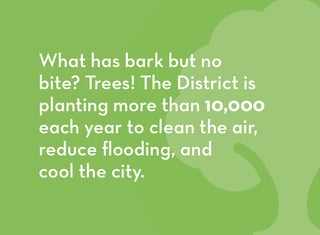 As those of us working in the environmental and sustainability fields know all too well, there is a tendency for our work to convey a bit of “doom and gloom” — not to mention it can be complicated and confusing. The District is using the Ambassadors program to emphasize that “sustainability is fun” and to have average residents talk in a more relaxed, less wonky tone.
As those of us working in the environmental and sustainability fields know all too well, there is a tendency for our work to convey a bit of “doom and gloom” — not to mention it can be complicated and confusing. The District is using the Ambassadors program to emphasize that “sustainability is fun” and to have average residents talk in a more relaxed, less wonky tone.
And for the volunteers to communicate “fun,” it has to be fun for them. The District’s ambassadors get a free T-shirt. They meet people from all walks of life and make new connections. They visit different parts of the city and are exposed to cool events. They get a training that provides skills useful at work and in life. And judging from the photos, they totally have fun.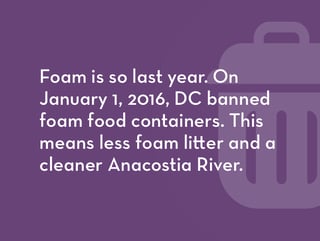
One unexpected benefit Guilbeault calls out is the advice they’ve received on messaging and materials. Given their different backgrounds and approaches, the ambassadors have identified what messages and tactics work best to draw people in. The result, as you can see from some of these examples, is a shift from text-heavy brochures to something more fun, simple, engaging and — most importantly — effective.
The city expects the program to keep growing. Their evaluation surveys have shown that the triggers for someone joining the Ambassadors program include:
- Being new to the area and wanting to get involved in the community
- Interest in learning new skills or enhancing their resume
- Truly caring about the issues — whether it’s clean energy, cleaning up area waterways, or local food access.
Guilbeault sums it up as “people looking for a positive way to make a change in their community and their world.” That’s especially true these days, in D.C. and throughout the country.
If you’re struggling to build that foundational go-to volunteer program, the Sustainable D.C. Ambassador model might worth considering.
UPDATE JANUARY 2018: We reconnected with Dan Guilbeault of DC at the end of 2017 to see how their 2017 Volunteer Ambassador cohort and how the program was evolving. Read the update from Dan.
Kim Lundgren is CEO of Kim Lundgren Associates, Inc. (KLA), a benefits corporation that delivers customized solutions for local governments to create the sustainable community they want. Kim was an early municipal sustainability pioneer and has dedicated the last 16 years to spurring local action and long-lasting behavior change to realize tangible improvements to the economic, environmental, and social aspects of our communities ultimately resulting in a more sustainable future. You can listen to her SAS Talk with Kim podcast with D.C.’s Dan Guilbeault and other local sustainability leaders.

